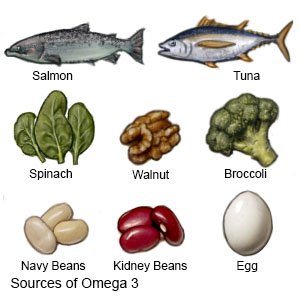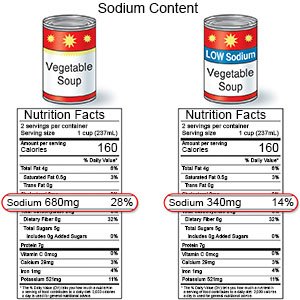Meal Planning with Diabetes Exchanges
Medically reviewed by Drugs.com. Last updated on Aug 4, 2025.
AMBULATORY CARE:
Diabetes exchanges
are servings of food that have similar amounts of carbohydrates, fat, protein, and calories . Exchanges can be used to create a healthy meal plan to help you manage your blood sugar levels. A meal plan with the right amount of carbohydrates is especially important. Your blood sugar rises after you eat carbohydrates. Too many carbohydrates in 1 meal or snack can raise your blood sugar level too much. Carbohydrates are found in starches, fruit, milk, yogurt, and sweets.
Call your doctor or diabetes care provider if:
- You have high blood sugar levels during a certain time of day, or almost all of the time.
- You often have low blood sugar levels.
- You have questions or concerns about your condition or care.
Create a meal plan with exchanges:
A dietitian will work with you to create a healthy meal plan that is right for you. This meal plan will include the amount of exchanges from each food group each day. Follow your meal plan by tracking exchanges for meals and snacks. Your meal plan will be based on your age, weight, blood sugar levels, medicine, and activity level.
Starch food group exchanges:
Each exchange below contains about 15 grams of carbohydrate , 3 grams of protein, 1 gram of fat, and 80 calories.
- 1 ounce of white, whole wheat or rye bread (1 slice)
- 1 ounce of bagel (about ¼ of a bagel)
- 1 6-inch flour or corn tortilla or 1 4-inch pancake (about ¼ inch thick)
- ⅓ cup of cooked pasta or rice
- ¾ cup of dry, ready-to-eat cereal with no sugar added
- ½ cup of cooked cereal, such as oatmeal
- 3 graham cracker squares or 8 animal crackers
- 6 saltine-type crackers
- 3 cups of popcorn or ¾ ounce of pretzels
- Starchy vegetables and cooked legumes:
- ½ cup of corn, green peas, sweet potatoes, or mashed potatoes
- ¼ of a large baked potato
- 1 cup of acorn, butternut squash, or pumpkin
- ½ cup of beans, lentils, or peas (such as pinto, kidney, or black-eyed)
- ⅔ cup of lima beans
Fruit group exchanges:
Each exchange contains about 15 grams of carbohydrate and 60 calories.
- 1 small (4 ounce) apple, banana orange, or nectarine
- ½ cup of canned or frozen fruit
- ½ cup (4 ounces) of unsweetened fruit juice
- 2 tablespoons of dried fruit
Milk or milk substitute group exchanges:
Each exchange contains about 12 grams of carbohydrate and 8 grams of protein. The amount of fat and calories in each serving depends on the type of milk or yogurt (such as whole, low-fat, or fat-free).
- 1 cup fat-free or low-fat milk
- ¾ cup of plain, nonfat yogurt
- 1 cup fat-free, flavored yogurt with artificial (no calorie) sweetener
Related medications
Non-starchy vegetable group exchanges:
Each exchange contains about 5 grams of carbohydrate , 2 grams of protein, and 25 calories. Examples include beets, broccoli, cabbage, carrots, cauliflower, cucumber, mushrooms, tomatoes, and zucchini. Three servings of a non-starchy vegetable is equal to 1 carbohydrate serving.
- ½ cup of cooked vegetables or 1 cup of raw vegetables
- ½ cup of vegetable juice
Protein substitute group exchanges:
Each exchange of a lean protein listed below contains about 7 grams of protein, 0 to 3 grams of fat, and 45 calories. Medium and high-fat proteins have more calories. Some plant-based proteins contain carbohydrates. Read all food labels for carbohydrate amounts.
- 1 ounce of chicken or turkey without skin, or 1 ounce of fish (not breaded or fried)
- 1 ounce of lean beef, pork, or lamb
- 1-inch cube or 1 ounce of low-fat cheese
- 2 egg whites or ¼ cup of egg substitute
- ½ cup of tofu
Sweets, desserts, and other carbohydrate group exchanges:
- Sweets and other desserts: Each exchange has about 15 grams of carbohydrate .
- 1 ounce of angel food cake or 2-inch square cake (unfrosted)
- 2 small cookies
- ½ cup of sugar-free, fat-free ice cream
- 1 tablespoon of syrup, jam, jelly, table sugar, or honey
- Combination foods:
- 1 cup of an entrée, such as lasagna, spaghetti with meatballs, macaroni and cheese, and chili with beans (each serving counts as 2 carbohydrate exchanges )
- 1 cup of tomato or vegetable beef soup (each serving counts as 1 carbohydrate exchange )
Fat group exchanges:
Each exchange contains 5 grams of fat and 45 calories.
- 1 teaspoon of oil (such as canola, olive, or corn oil)
- 6 almonds or cashews, 10 peanuts, or 4 pecan halves
- 2 tablespoons of avocado
- ½ tablespoon of peanut butter
- 1 teaspoon of regular margarine or 2 teaspoons of low-fat margarine
- 1 teaspoon of regular butter or 1 tablespoon of low-fat butter
- 1 teaspoon of regular mayonnaise or 1 tablespoon of low-fat mayonnaise
- 1 tablespoon of regular salad dressing or 2 tablespoons of low-fat salad dressing
Free foods:
The foods on this list are called free foods because they have very few calories. Free foods usually do not increase your blood sugar if you limit them to 3 servings spread throughout the day.
- 1 tablespoon of catsup or taco sauce
- ¼ cup of salsa
- 2 tablespoons of sugar-free syrup or 2 teaspoons of light jam or jelly
- 1 tablespoon of fat-free salad dressing
- 4 tablespoons of fat-free margarine or fat-free mayonnaise
- Sugar-free drinks: diet soda, sugar-free drink mixes, or mineral water
- Low-sodium bouillon or fat-free broth
- Mustard
- Seasonings such as spices, herbs, and garlic
- Sugar-free gelatin without added fruit
Other healthy nutrition guidelines:
- Limit artificial sweeteners. These may be found in food or drinks, such as diet soft drinks or other low-calorie beverages. Your dietitian or healthcare provider will encourage you to drink water. Water helps your kidneys to function properly. Ask how much water you should drink every day.
- Eat more high-fiber foods. Choose foods that are good sources of fiber, such as fruits, vegetables, and whole grains. Cereals that contain 5 or more grams of fiber per serving are good sources of fiber. Legumes such as garbanzo, pinto beans, kidney beans, and lentils are also good sources.

- Choose heart healthy, low fat foods. Ask your dietitian or provider how much fat you should eat each day. Choose foods low in fat, saturated fat, trans fat, and cholesterol. Examples include turkey or chicken without the skin, fish, lean cuts of meat, and beans. Low-fat dairy foods, such as low-fat or fat-free milk and low-fat yogurt are also good choices. Omega-3 fatty acids are healthy fats that are found in canola oil, soybean oil and fatty fish. Salmon, albacore tuna, and sardines are good sources of omega 3 fatty acids. Eat 2 servings of these types of fish each week. Do not eat fried fish.

- Limit sugar. Sugar and sweets must be counted toward the carbohydrate exchanges that you can have within your meal plan. Limit sugar and sweets because they are usually also high in calories and fat. Share a dessert or ask for a child-size portion at a restaurant.
- Have less sodium (salt). Limit sodium to 2,300 mg or less per day. You may need to eat even less sodium if you have certain medical conditions. Foods high in sodium include soy sauce, potato chips, and soup.

- Limit alcohol as directed. Ask your provider if it is okay for you to drink alcohol. Your provider can tell you how many drinks are okay for you within 24 hours or within 1 week. Always have food when you drink alcohol. Your blood sugar may fall to a low level if you drink when your stomach is empty. Women 21 years or older and men 65 years or older should limit alcohol to 1 drink a day. Men aged 21 to 64 years should limit alcohol to 2 drinks a day. A drink of alcohol is 12 ounces of beer, 5 ounces of wine, or 1½ ounces of liquor.
Other ways to manage diabetes:
- Control your blood sugar level. Test your blood sugar level regularly and keep a record of the results. Ask your healthcare provider when and how often to test it. You may need to check your blood sugar at least 3 times each day.
- Talk to your provider about your weight. Ask if you need to lose weight, and how much you need to lose. Ask your provider to help you create a weight loss plan, if needed.
- Get regular physical activity. Physical activity can help lower your blood sugar, reduce heart disease risk, and manage weight. Adults should get at least 150 minutes (2.5 hours) of moderate intensity aerobic activity every week. Spread aerobic activity over at least 3 days, with no more than 2 days off in a row. Children should get at least 60 minutes of moderate physical activity on most days of the week. You can walk, bike, dance, swim, or garden for aerobic exercise. Do not sit for more than 30 minutes at a time. Work with your diabetes care team to create a plan for physical activity.

© Copyright Merative 2025 Information is for End User's use only and may not be sold, redistributed or otherwise used for commercial purposes.
The above information is an educational aid only. It is not intended as medical advice for individual conditions or treatments. Talk to your doctor, nurse or pharmacist before following any medical regimen to see if it is safe and effective for you.
Further information
Always consult your healthcare provider to ensure the information displayed on this page applies to your personal circumstances.
